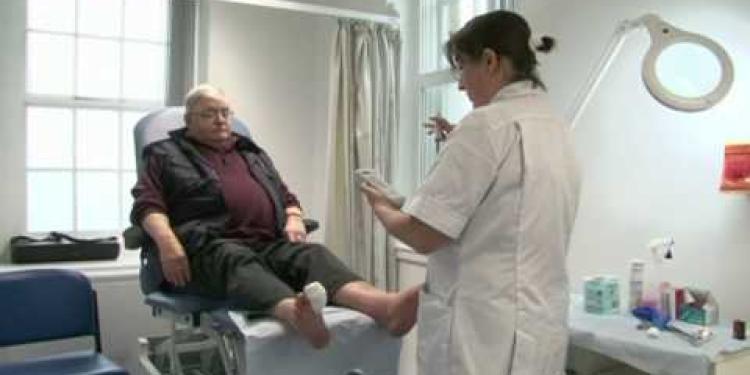
Find A Professional
More Videos of Interestdiagnosis
Understanding the Prostate Specific Antigen (PSA) Test
The Prostate Specific Antigen (PSA) test is a crucial tool in the early detection and monitoring of prostate health issues in men. Conducted through a simple blood test, it measures levels of PSA, a protein produced by both normal and malignant cells of the prostate gland, in the bloodstream. Aimed primarily at men over the age of 50, the PSA test can provide early indicators of prostate cancer or other prostate-related conditions. While it is a widely used diagnostic tool, it’s important to understand its nuances and implications.
How the PSA Test Works
The PSA test involves drawing a small amount of blood from the patient, which is then analyzed in a laboratory to measure the level of PSA. Elevated levels of PSA in the blood can signal the presence of prostate cancer, benign prostatic hyperplasia (BPH), or inflammation of the prostate, known as prostatitis. However, elevated levels do not definitively diagnose cancer, necessitating further examination such as a biopsy for conclusive results.
Interpreting PSA Test Results
PSA levels are often measured in nanograms per milliliter (ng/mL). Typically, a PSA level under 4 ng/mL is considered normal, but this can vary based on age and other risk factors. Higher levels might suggest the need for additional tests. It's crucial for patients to discuss their individual results with healthcare providers, considering personal health history and current symptoms, to understand the implications fully and decide on the next steps.
Benefits and Limitations of the PSA Test
The primary benefit of the PSA test is its ability to detect potential prostate issues early, allowing for timely intervention. Early detection significantly improves treatment outcomes for prostate cancer. However, the test also has limitations. Elevated PSA levels can lead to false positives, causing unnecessary stress and potentially invasive follow-up tests. Conversely, prostate cancer does not always produce high PSA levels, resulting in false negatives. Thus, the PSA test is usually accompanied by other diagnostic procedures to verify results.
Access to PSA Testing in the UK
In the United Kingdom, men over 50 can request a PSA test through the National Health Service (NHS). Importantly, men with a family history of prostate issues, those of African-Caribbean or African descent, and individuals with other specific risk factors may consider starting PSA testing earlier. Consulting with a healthcare professional is essential for understanding personal risk factors and making informed decisions about prostate health screening.
Frequently Asked Questions
What is a PSA test?
A PSA test is a blood test used to measure the level of prostate-specific antigen (PSA) in the blood, which is produced by the prostate gland. It's often used to help detect prostate cancer in men.
Who should consider getting a PSA test?
Men over the age of 50, and those over 45 with a family history of prostate cancer or men of African-Caribbean or African descent, might consider having a PSA test. It's important to discuss the advantages and disadvantages with your GP.
How is a PSA test performed?
A PSA test is performed through a simple blood sample, typically taken from the arm.
What are normal PSA levels?
Normal PSA levels can vary based on age and other factors, but generally, a PSA level of less than 3 ng/mL is considered normal for most men.
What can cause elevated PSA levels?
Elevated PSA levels can be caused by prostate cancer, but also by conditions such as benign prostatic hyperplasia (BPH), prostatitis, or even recent ejaculation or vigorous exercise.
Is a PSA test a definitive test for prostate cancer?
No, a PSA test is not definitive for prostate cancer. Elevated PSA levels may lead to further testing, such as a digital rectal exam (DRE) or a prostate biopsy, to confirm a diagnosis.
What are the risks of a PSA test?
Risks of a PSA test include false positive or false negative results, which can lead to unnecessary anxiety, further testing, and potential side effects from treatments.
How often should I have a PSA test?
The frequency of PSA testing depends on individual risk factors and should be discussed with your healthcare provider to tailor a plan that fits your age, health, and family history.
What should I do if my PSA levels are elevated?
If you have elevated PSA levels, your doctor might recommend additional tests to determine the cause, such as a repeat PSA test, an MRI, or a biopsy.
Can a PSA test detect other conditions besides prostate cancer?
Yes, a PSA test can indicate other prostate issues like benign prostatic hyperplasia (BPH) or prostatitis, as well as urinary infections.
What factors can influence PSA levels?
Several factors can influence PSA levels, including age, race, prostate size, medications, and recent ejaculation or prostate manipulation.
What preparation is needed before a PSA test?
Generally, no special preparation is required for a PSA test, but you may be advised to avoid ejaculation and heavy exercise for 48 hours before the test.
Are there alternatives to the PSA test for prostate cancer screening?
Other tests like a digital rectal exam (DRE) or imaging studies such as MRI may be used in conjunction with PSA testing. These alternatives should be discussed with a healthcare provider.
Can lifestyle changes affect PSA levels?
Healthy lifestyle changes such as a balanced diet, regular exercise, and maintaining a healthy weight may contribute to overall prostate health, though the impact on PSA levels can vary.
Where can I get a PSA test in the UK?
PSA tests are available through the NHS, and you can consult your GP for advice on getting the test and discussing your options.
Useful Links
More Videos of Interestdiagnosis
Have you found an error, or do you have a link or some information you would like to share? Please let us know using the form below.
- Ergsy carfully checks the information in the videos we provide here.
- Videos shown by Youtube after a video has completed, have NOT been reviewed by ERGSY.
- To view, click the arrow in centre of video.
- Most of the videos you find here will have subtitles and/or closed captions available.
- You may need to turn these on, and choose your preferred language.
- Go to the video you'd like to watch.
- If closed captions (CC) are available, settings will be visible on the bottom right of the video player.
- To turn on Captions, click settings .
- To turn off Captions, click settings again.























































